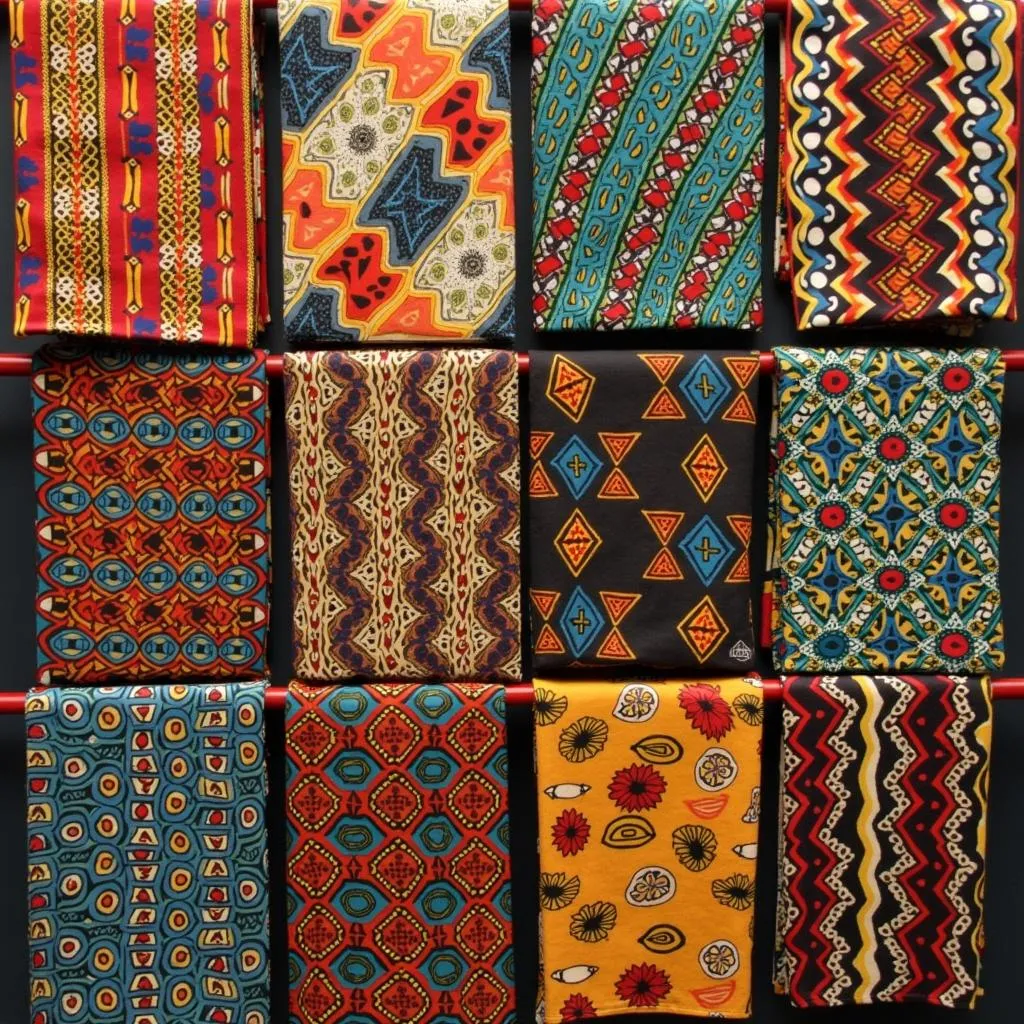A Journey Through the Rich Tapestry of African Art Work
African Art Work is a vibrant and diverse tapestry, woven from centuries of tradition, innovation, and a deep connection to the natural world. It encompasses a vast array of forms, materials, and styles, each reflecting the unique cultural heritage of the people who created it. From the intricate wood carvings of West Africa to the colorful beadwork of the Maasai, African art is a testament to the creativity and ingenuity of the human spirit.
 Intricately carved African mask sculpture
Intricately carved African mask sculpture
Unmasking the History: A Glimpse into African Art’s Past
The history of African art work stretches back thousands of years, with evidence of rock paintings dating back to the Stone Age. These early forms of artistic expression provide a glimpse into the lives and beliefs of ancient African societies. As civilizations developed, so too did their art, with distinctive styles emerging in different regions. The Nok culture of ancient Nigeria, for example, is known for its terracotta sculptures, while the ancient Egyptians left behind a legacy of monumental architecture and intricate hieroglyphics.
The arrival of European colonists in the 15th century had a profound impact on African art. While traditional forms of art continued to be produced, they were often influenced by European tastes and styles. This led to the development of new art forms, such as the Afro-Portuguese ivories, which combined African motifs with European designs.
Exploring the Diversity: Styles and Forms in African Art Work
African art work is incredibly diverse, encompassing a wide range of styles and forms. Some of the most well-known include:
- Masks: Masks play a significant role in many African cultures, used in ceremonies, rituals, and dances. They are often carved from wood, but can also be made from other materials, such as metal, fabric, and beads.
- Sculptures: African sculptures are known for their expressive forms and powerful symbolism. They can range in size from small figurines to monumental statues and are often used to represent ancestors, deities, or important figures in society.
- Textiles: Textiles, such as kente cloth from Ghana and bogolanfini mud cloth from Mali, are not only beautiful but also carry cultural significance. They are often used for clothing, blankets, and wall hangings.
- Beadwork: Beadwork is a popular form of art in many African cultures. It is used to create jewelry, clothing, and other decorative items. The Maasai people of East Africa are particularly renowned for their intricate beadwork.
- Pottery: Pottery is one of the oldest forms of African art work. It is used for both utilitarian and decorative purposes, with distinctive styles found in different regions.
 Vibrant textiles for sale in an African market
Vibrant textiles for sale in an African market
The Power of Symbolism: Deciphering the Language of African Art
African art work is often imbued with deep symbolism. Every motif, color, and material used has a specific meaning, telling a story or conveying a message. For example, the use of certain animals in masks and sculptures often represents specific qualities or characteristics. The lion, for instance, is often associated with strength and power, while the elephant symbolizes wisdom and longevity.
African Art in the Modern World: A Global Influence
In the 20th century, African art work experienced a surge in popularity in the West. Artists such as Pablo Picasso and Henri Matisse were inspired by its expressive forms and bold use of color, leading to the development of new artistic movements, such as Cubism. Today, African art work continues to influence contemporary artists and designers around the world. It is collected by museums and private collectors alike, and its unique beauty and cultural significance are celebrated globally.
African Garments Shops: A Gateway to Authentic Pieces
For those interested in experiencing the beauty of African art work firsthand, African garments shops are a wonderful place to start. These shops offer a wide variety of authentic pieces, from traditional masks and sculptures to contemporary paintings and textiles. They are a great way to support African artists and learn more about the rich cultural heritage of the continent.
Conclusion: A Celebration of Creativity and Cultural Heritage
African art work is a testament to the creativity, ingenuity, and resilience of the African people. It is a vibrant and ever-evolving art form that continues to inspire and captivate audiences around the world. From the intricate details of a carved mask to the bold colors of a woven textile, each piece tells a story, connecting us to the rich history and cultural heritage of Africa.
FAQ
1. What are some of the most famous examples of African art work?
Some of the most famous examples of African art work include the Benin Bronzes, the Nok terracotta sculptures, and the Great Zimbabwe stone sculptures.
2. What is the significance of masks in African art?
Masks play a significant role in many African cultures, used in ceremonies, rituals, and dances. They are often used to represent ancestors, deities, or spirits.
3. How has African art influenced Western art?
African art work has had a profound influence on Western art, inspiring artists such as Pablo Picasso and Henri Matisse and leading to the development of new artistic movements, such as Cubism.
4. Where can I buy authentic African art work?
You can buy authentic African art work from reputable galleries, dealers, and online marketplaces. African garments shops are also a great option.
5. How can I learn more about African art?
There are many resources available to help you learn more about African art, including books, articles, museums, and cultural centers. You can also take classes or workshops on African art history and appreciation.
Other Questions You Might Have
- What are the different types of African art?
- How is African art made?
- What is the meaning behind African art motifs?
- How has African art changed over time?
Explore More African Culture
Get in Touch
For any inquiries or assistance, please feel free to reach us:
- Phone Number: +255768904061
- Email: kaka.mag@gmail.com
- Address: Mbarali DC Mawindi, Kangaga, Tanzania
Our dedicated team is available 24/7 to assist you.



